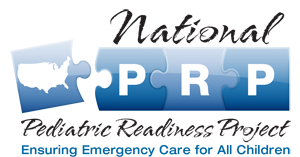Pediatric readiness

Having an interfacility transfer agreement and guideliens are a key element of pediatric readiness for EDs.
The Pediatric Interfacility Transfer Guide

Approximately 85% of neonatal and pediatric patients present to general emergency departments (EDs) rather than specialized pediatric EDs. When necessary, it’s essential to ensure your ED is able to quickly and safely transfer pediatric patients between facilities. The Emergency Medical Services for Children Program, alongside the Emergency Nurses Association and Society of Trauma Nurses, has released an updated Pediatric Interfacility Transfer Guide to help ED clinicians plan, prepare, and execute transfers for young patients. The guide includes steps for drafting agreements, agreement examples, regulatory resources, case studies and more. This guidebook, and its companion toolkit, are free and open access.
DOWNLOAD THE GUIDE
Companion Toolkit
Section 2- Types and Examples of IFT Agreements
- Transfer Agreement, California Department of Health
- Memorandum of Understanding, State of Oklahoma
- Interhospital Transfer Agreement [Trauma Patients], Robert Wood Johnson Barnabas Health in New Jersey
- Transfer Agreement Example, Center for Medicare and Medicaid Services
Section 3- Drafting and Implementing IFT agreements
- Steps for developing an agreement (Figure 2), EMSC, ENA & STN
Section 4 - Regulations and Standards
- Pediatric equipment lists:
- EMTALA, Centers for Medicare and Medicaid Services
- Regulations & Policies, Federal Aviation Administration
- Air Ambulance Service, U.S. Department of Transportation
- State Model Rules for the Regulation of Air Medical Services, NASEMSO
Section 5- Talking points
- Talking points to support establishing an agreement, EMSC, ENA & STN
Section 6- Establishing Clinical Processes To Facilitate Transfers
Sample transfer checklists
- Sample Pediatric Interfacility Transfer Checklist, The Handbook of Advanced Pediatric Life Support
- EMSC Pediatric Provider & Caregiver Checklist, EMSC Connecticut Transfer Checklist
Burn patient referral
- Guidelines for Burn Patient Referral, American Burn Association
Section 7 - Transportation considerations
- Considerations for choosing the appropriate transport method, University Hospitals (Figure 4)
- EMSC transport guidelines for providers, CT EMSC (Figure 5)
Section 8 - Patient and Family Considerations
- Institute for Patient- and Family-Centered Care
- Family Voices
- What Is Health Literacy? Centers for Disease Control and Prevention
Section 9 - Special populations
Children and youth with special health care needs
- Programs and Projects, Family Voices
- Complex Child, Complex Child magazine
- Collaborative Conversations With Families to Advance the Clinical Care of Children With Medical Complexities and Disabilities, C6 Seminar Series
- STARS: Special Needs Tracking & Awareness Response System, SSM Health Cardinal Glennon Children’s Hospital
Infection control
Section 10 - The importance of monitoring quality
Form examples
- QI Monitoring Tool: Pediatric Interfacility Transfers, Illinois EMSC Facility Recognition & QI Committee
- Follow-Up Communication Form: Sending Facility to Receiving Facility, Illinois EMSC Facility Recognition & QI Committee
- Follow-Up Communication Form: Receiving Facility to Sending Facility, Illinois EMSC Facility Recognition & QI Committee
- Follow-Up Communication Form: Receiving Trauma Center to Referring Facility, University Hospitals
Quality improvement resources
- How to Improve, Institute for Healthcare Improvement
- Lean Six Sigma Institute
- Agency for Healthcare Research and Quality
- Trauma Quality Improvement Program, American College of Surgeons
- Commission on Accreditation of Medical Transport Systems
- Ground & Medical Quality in Transport (may have a fee)
- EMSC QI Collaboratives
- EMSC QI tools
QUESTIONS OR FEEDBACK?
